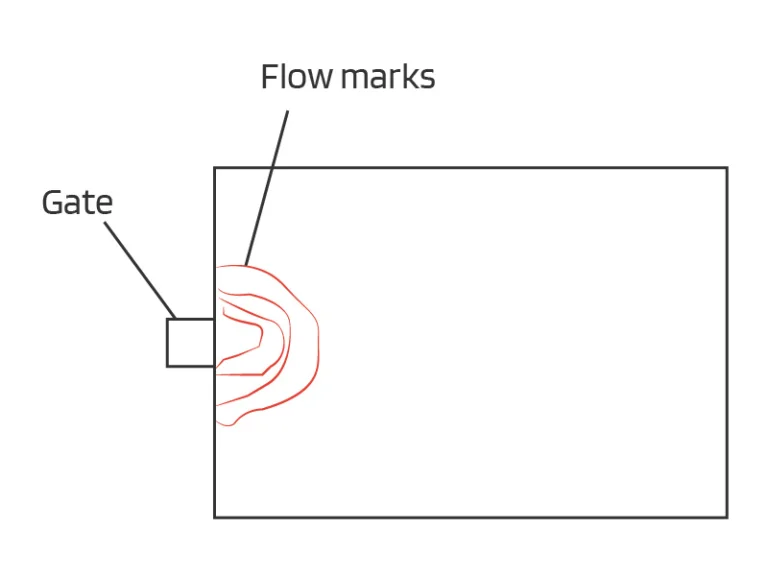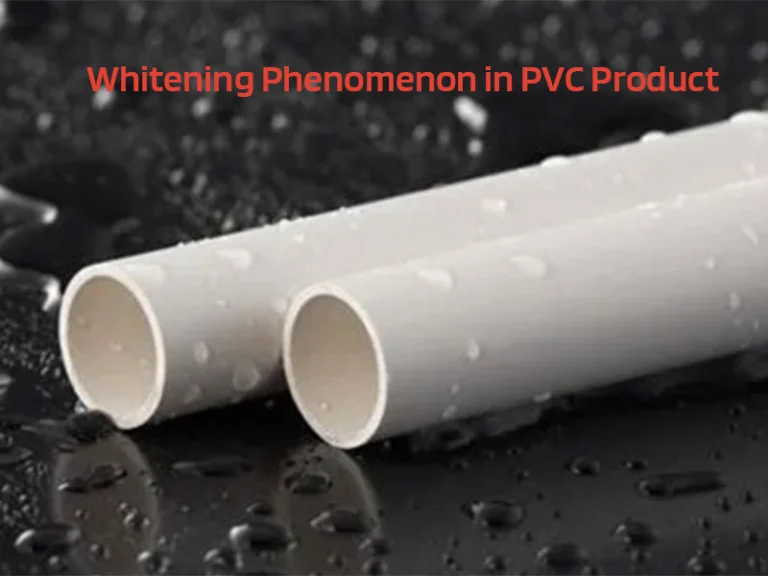Brittleness in injection molding is a common plastic injection molding defect. It refers to the tendency of a molded plastic part to break or crack under conditions where it would not normally do so. This defect often results from shorter molecular chain lengths, leading to lower molecular weight and reduced physical integrity of the part. Brittleness can manifest during ejection from the mold or handling post-ejection, and it is a critical issue that compromises the durability and functionality of the molded parts. In this post, we will explore what causes brittleness in injection molding and the solutions to brittleness in injection molding.
The Causes of Brittleness in Injection Molding
Brittleness in injection molded parts can result from various factors. Understanding these causes is crucial for identifying and mitigating brittleness in molded components.
Machine-Related Causes
1. Improper Screw Design
An improper screw design can lead to material degradation, which is a significant cause of brittleness. The wrong screw configuration may result in improper melt mixing or overheating, both of which can degrade the material and reduce its molecular weight. It’s crucial to consult with material and machine suppliers to obtain the correct screw design information to avoid these issues.
2. Incorrect Injection Speed
Excessive injection speed can cause material degradation, leading to brittleness. High shear rates generated by fast injection speeds can break down the polymer chains, reducing the material’s molecular weight and overall physical properties.
3. Low Melt Temperature
Incorrect temperature settings including low melt temperature, can affect the material flow and final properties. Setting proper barrel and nozzle temperatures is important to avoid material degradation.
4. Excessive Back Pressure or Screw RPM
High back pressure and excessive screw speed can generate excessive shear heat, leading to polymer decomposition and brittleness. Reducing back pressure and screw speed can help prevent this issue.
5. Additional machine-related factors that can contribute to brittleness include:
- Residence Time: Prolonged residence time in the barrel can cause material degradation. Using a machine with a smaller shot size can help minimize residence time and reduce material degradation.
- Barrel Temperature: Excessively high barrel temperatures can cause material degradation, leading to brittleness.
- Machine Size: Using a machine that is too large for the part being molded can contribute to brittleness issues.
Mold-Related Causes
1. Cold Mold Surface
A cold mold surface can significantly contribute to brittleness in injection molded parts. When the mold surface is too cold, it can cause premature cooling of the plastic as it fills the mold, leading to increased internal stresses and potential brittleness. It’s important to maintain the correct water temperature for quality molding to prevent this issue.
2. Inadequate Runner and Gate Design
Restrictive sprue, runner, or gate design can cause excessive shear heating, which can aggravate an already overheated material, leading to material degradation and brittleness.
If the runners and gates are too small for the application, they can create excessive shear rates during filling, which in turn can cause brittleness.
Improper gate location or unsuitable runner systems can cause inconsistent material flow and cooling, resulting in parts that do not meet specifications and may be prone to brittleness.
3. Too Thin Wall Thickness
Thin walls can lead to faster cooling and increased stress concentration, which can make the parts more brittle. Ensuring uniform wall thickness can help mitigate this issue.
4. Sharp Corners
Sharp corners and notches can act as stress concentrators and initiation points for cracks. Rounded corners and smooth transitions can reduce brittleness.
5. The Design with Stress Concentration Points
Design features that create localized stress, such as ribs, bosses, or holes, can increase the likelihood of brittleness. Proper design techniques to distribute stress evenly are essential.
Material-Related Causes
1. Material Degradation
Material degradation is a significant cause of brittleness in injection molded parts. It occurs when polymer chains break, reducing the molecular weight of the plastic material. This degradation can happen due to:
Thermal degradation: Caused by excessive heat exposure during processing, such as: Over-drying of raw plastic granules, Too high barrel or melt temperatures, Excessive shear heating from high back pressure or fast screw rotation.
Hydrolysis degradation: Occurs when too much moisture is present during high-temperature, high-pressure processing, causing a chemical reaction that breaks polymer chains
2. Excessive Moisture in the Resin
Excessive moisture in the resin can lead to hydrolysis degradation and brittleness. This is particularly problematic for hygroscopic materials like polycarbonate and polyester. Improper drying conditions or careless material handling can introduce moisture, compromising the material’s integrity.
3. Too Much Regrind Material
Using excessive amounts of regrind material can contribute to brittleness:
Regrind material may have already experienced some level of degradation from previous processing cycles, leading to reduced molecular weight.
Large regrind particles may not melt adequately, creating stress concentrations in the molded part.
Multiple recycling cycles can further degrade the material, with each cycle potentially pushing more polymer chains below the critical molecular weight threshold.
Process-Related Causes
1. Short Cycle Time
Insufficient cooling time leads to high internal stresses in the part. Premature ejection, which can cause parts to break or crack upon removal from the mold.
2. Inconsistent Process Cycles
Varying cooling rates can create inconsistent internal stresses. Fluctuating melt temperatures or injection speeds, potentially causing localized material degradation.
3. Improper Drying Conditions
Insufficient drying: Excessive moisture in hygroscopic materials like polycarbonate and polyester can lead to hydrolysis degradation during processing, resulting in brittleness.
Excessive drying: Over-drying can drive off volatiles in the plastic, making it more sensitive to processing, or degrade the material by reducing the molecular weight.
Identifying Brittleness in Molded Parts
1. Visual Inspection
- Cracking and Crazing: Visible cracks or crazing (fine lines or small cracks) on the surface of the part can indicate brittleness. These defects often appear immediately after ejection or during handling.
- Grooves and Ripples: The presence of concentric grooves, ripples, or wave marks can suggest internal stresses that may lead to brittleness.
- Flaky Brittleness: Parts that exhibit a flaky appearance upon breaking are often brittle. This can be a result of material degradation or improper processing conditions.
- Localized Defects: Specific areas, such as near the gate, may show signs of brittleness due to over-packing or under-packing, which creates high internal stresses.
2. Physical Testing Methods
- Impact Testing: Conducting impact tests can help determine the material’s resistance to sudden forces. Brittle parts will typically fail at lower impact energies compared to non-brittle parts.
- Tensile Testing: Tensile tests measure the material’s strength and elongation. Brittle materials will show lower elongation at break and may fail at lower tensile strengths.
- Thermal Cycling: Subjecting parts to thermal cycling (e.g., from -40°F to +240°F) can reveal brittleness by inducing stress relief in the material. Parts that crack or fail during these cycles are likely brittle.
Solutions and Remedies of Brittleness in Injection Molding
Machine Adjustments
- Optimizing Injection Speed: Adjusting the injection speed can help reduce shear stress and material degradation. If the speed is too high, it can cause excessive shear heating, leading to brittleness. Conversely, too slow a speed can result in poor material flow and incomplete filling.
- Optimizing Injection Pressure: Properly setting the injection pressure ensures that the material fills the mold correctly without causing excessive stress. High pressure can lead to over-packing and increased internal stresses, while low pressure can result in incomplete filling and weak parts.
- Adjusting Melt Temperature: Ensuring the correct melt temperature is crucial to prevent material degradation. Too high a temperature can degrade the polymer, while too low a temperature can cause poor flow and incomplete filling.
- Maintaining Appropriate Mold Temperature: Maintaining an appropriate mold temperature helps in achieving uniform cooling and reducing internal stresses. A cold mold surface can cause premature cooling and brittleness.
- Optimizing Screw Design: Using the correct screw design for the specific material can prevent improper melt mixing and overheating. Consulting with material and machine suppliers can provide the right screw design information.
- Optimizing Screw Operation: Adjusting screw speed and back pressure can help minimize shear heating and material degradation. Excessive screw speed and back pressure can lead to high shear rates and degradation.
Mold Modifications
- Improving Runner System: Optimizing the runner system design can prevent excessive shear heating and material degradation. Restrictive sprue, runner, or gate designs can cause high shear rates, leading to brittleness.
- Optimizing Gate Design: Ensuring the gates are appropriately sized and located can help in achieving uniform material flow and reducing stress concentrations. Small gates can create high shear stress and localized degradation.
Material Handling
- Proper Drying Conditions: Following the material supplier’s recommendations for drying conditions is crucial to prevent moisture-related degradation. Proper drying techniques ensure that hygroscopic materials like polycarbonate and polyester are free from excessive moisture.
- Proper Drying Equipment: Using appropriate drying equipment, such as desiccant dryers, can help achieve the required drying conditions and prevent material degradation.
- Optimizing Regrind Proportion: Limiting the amount of regrind material used can prevent brittleness caused by degraded material. Excessive regrind can reduce the molecular weight and physical properties of the part.
- Improve Regrind Quality: Ensuring that regrind material is properly sized and free from contamination can help maintain part quality. Large regrind particles may not melt adequately, creating stress concentrations.
- Material Selection Carefully: Selecting the appropriate material grade for the application can help reduce brittleness. High melt flow grades are often more brittle than lower melt flow grades. Ensuring compatibility of blended materials can prevent issues related to weak interfaces and localized stress concentrations.
Process Optimization
- Optimizing Cooling Time: Optimizing cycle times to ensure adequate cooling can help reduce internal stresses and prevent brittleness. Short cycle times may lead to insufficient cooling and high residual stresses.
- Proper Ejection Timing: Ensuring that parts are ejected at the right time can prevent premature ejection and potential cracking or breaking.
- Ensuring Process Consistency: Implementing process monitoring systems to maintain consistent cycles and prevent variations that lead to brittleness. Consistent melt temperatures, injection speeds, and pressures are crucial for part quality.
Conclusion
Brittleness in injection molding is a critical issue that can compromise the quality, durability, and functionality of plastic parts. The main causes of brittleness included machine-related factors, mold-related factors, material-related factors, and process-related factors. By taking a comprehensive approach that addresses machine, mold, material, and process factors, manufacturers can significantly reduce the occurrence of brittleness in injection molded parts.




